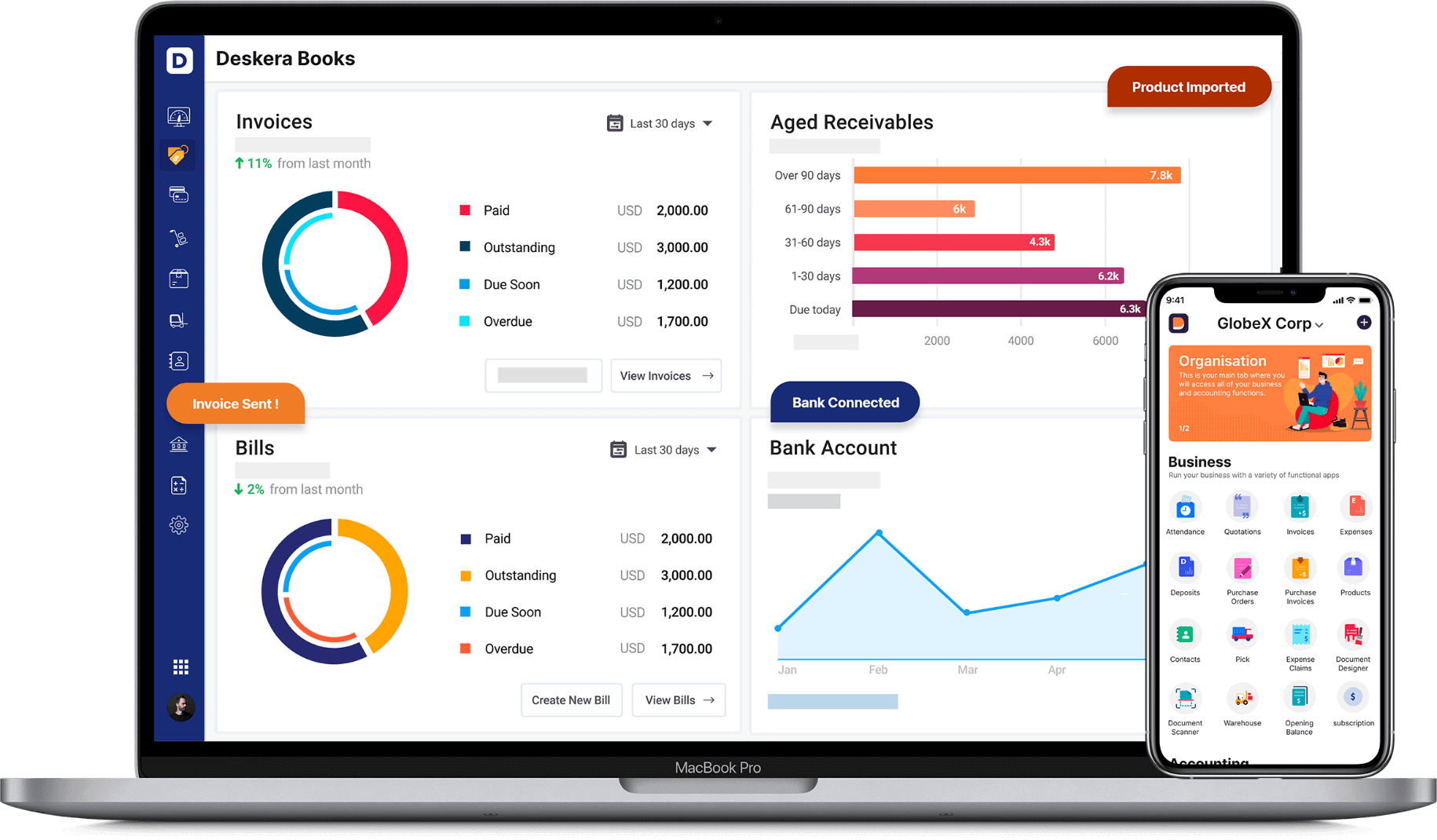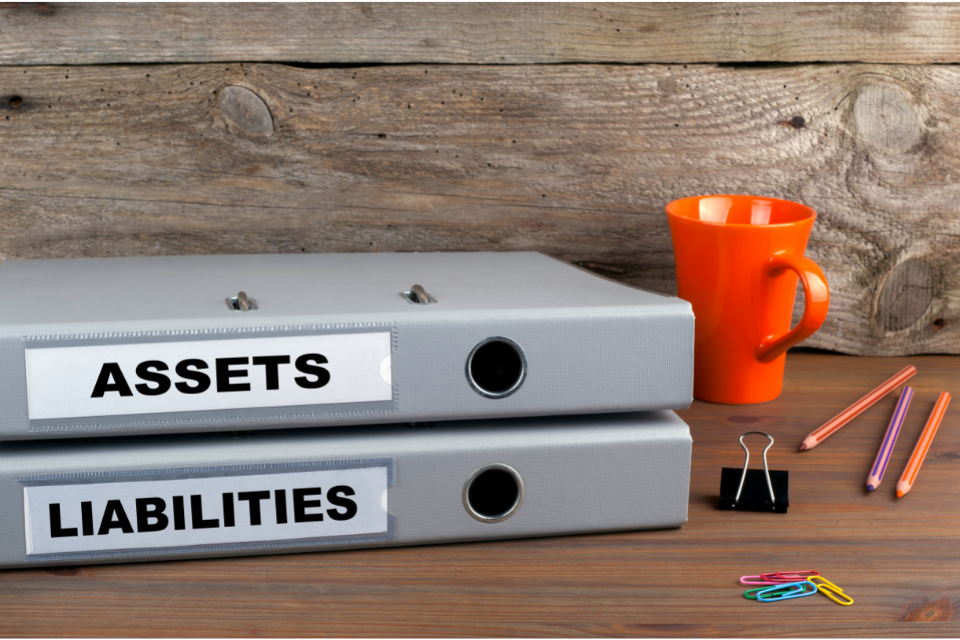If you are considering taking a loan or have already accepted a small business loan, you will notice that the amount to be repaid includes many additional factors. Whenever you borrow money from a lender, the amount you have to pay back is calculated as - the amount borrowed, interest charges, and additional fees incurred. These figures add to your overall repayment and are added to the Loan Principal. Therefore, through the entire timeline of your loan, you'll be making payments to reduce the Loan Principal to $0.
This makes it crucial for anyone to understand exactly what Loan Principal is and how it plays a role in your overall repayment.
This blog will help you understand how Loan Principle is calculated and what is essential to help make the right business decisions. In addition, we will explain the ways to repay loan principal a lot faster and calculate the amount to be paid back, enabling you to plan your expenses properly.
Read on to get all the details about:
- What exactly is Loan Principle?
- How does Loan Principal work?
- How is Loan Principal different from Interest?
- Loan Principal Vs. Loan Balance
- Where can you expect a Loan Principal?
- How do you identify your Loan Principal?
- Can you pay back the Loan Principle faster?
- Effect of Loan Principal on Taxes
Definition of Loan Principal
In financial and business terms, 'principal' can have several meanings and signify the original sum of money borrowed in a loan or invested in a particular financial product. It is used to illustrate the 'main' or 'principal' amount, and in this context, is thus the amount of money you borrow from a lender when you take out a loan.
Loan principal applies to all kinds of debt, be it a mortgage, car loan, business loan, or credit card balance. It includes the exact amount borrowed with the inclusion of interest charges, fees, and additional charges that the lender imposes. As your repayment cycle includes all the charges and other fees that will be imposed, knowing the loan principal helps make the right borrowing decisions.
With each payment you make to the lender, the principal amount reduces until it is erased. For each repayment, a part of the sum will be split to pay for your Interest, and the other part will be used to pay the Loan Principal.
How does a Loan Principal work?
Let us take a quick example to understand how loan principal is calculated. Suppose you take a loan of $10,000. You make a down payment of $2000 for this loan, so the initial principal on your loan is now $8000. Therefore, the bank charges an annual interest rate of 4% on your loan.
So, the first month's payment is calculated as $8000 (Loan Principal) x 4% (Interest Charged) / 12 (Term). Here the interest balance is $27, and each monthly payment you make will help pay off $27 monthly interest and $473 to reduce your Loan Principal. The payment will be calculated similarly for the next month, with your loan principal being reduced to $7527 (since you paid the first installment, $473 was used to reduce your Loan Principal).
So as you go on making payments, your Loan Principle will decrease until it reaches $0.
Loan Principal Vs. Interest
When calculating any loan, Interest is a crucial factor determining the amount to be paid back. But the Loan Principal is equally important to help understand how much you will be expected to repay. While loan principal is the amount you have borrowed, the Interest will be the cost attached to lending that money. This is added by any bank, credit union, or business lender, as the Interest is what helps them make a profit.
The key here is that your Loan Principal will be a fixed number or amount, while the Interest will be the percentage. Thus, the amount you owe to the lender is calculated as the amount borrowed plus the Interest charged.
Loan Principal Vs. Loan Balance
In addition to Interest, the loan balance is also a critical component of your loan repayment and is affected by the loan principal. So let us understand the overall loan balance and how loan principal plays a role in this.
In the example we looked at, the loan principal is the total amount borrowed, which is used as the base for add-on charges and Interest. So $8000 was the original amount borrowed, and after the first repayment, the reduced loan principal became your actual loan balance that needs to be paid off.
In most cases, the overall loan balance will consist of the Loan Principal and additional charges that you may incur overtime. Therefore, for most financial loans, loan principal often differs from loan balance, which may be higher due to Interest, penalty, fees, and other inclusion. However, in the ideal scenario, where payments are made each month, and only the Interest is added, Loan Principal and Loan Balance will always be the same.
Like loan principal, loan balance decreases over time as you make your monthly payments and repay the loan.
Where can you expect a Loan Principal?
Loan Principal is applicable whenever you avail of a loan or a financial instrument where you have to repay the sum borrowed in scheduled or monthly payments over some time.
This will include:
- Mortgages
- Business loan
- Home equity loan
- Car loan
- Student loan
- Personal loan
- Loan Against Property
- Equipment Financing / Invoice Financing or other financing options
How do you identify your Loan Principal?
To understand your loan principal, you can quickly check the loan's monthly statement that will typically mention the breakdown of the amount to be paid and the amount you owe to the lender. In addition, each amount will be deducted from your principal balance, which will help you understand the progress you are making with each load repayment.
- Your bank's closing disclosure will typically state the total amount of loan and interest payment for a home loan and your Loan Principal and interest payment.
- You may ask for the statement or learn your Loan Principal from your online account for a personal loan.
- The Loan Principal is mentioned in your initial disclosure statement and on your billing statements for student loans.
- For business loans or mortgages, the monthly mortgage statement will show you exactly how much of your loan payment goes towards interests and Loan Principal accordingly, with a detailed breakup until the end of the loan tenure.
In case any of your documents or statements do not reflect the Loan Principal, it is best to contact your lender for this information. Remember that it is required for the lender to provide the borrower with detailed information on loan repayment and Loan Principal, the add-on charges, interest rate, late fees, or any other cost that can be added to your loan payment has to be mentioned explicitly with terms in your contract.
Can you pay back the Loan Principle faster?
Now that we have understood how Loan Principal works, we come to the critical question - can it be repaid faster? Fortunately, the answer is yes, and many lenders offer this flexibility to borrowers.
You can make additional payments that include principal-only payments, which help to reduce the principal but not the Interest. Essentially, this means that while your Interest charged will stay the same each month, the Loan Principal that it will be levied on will be much less, making your repayment easier and with fewer monthly installments.
Making the extra payment for your Loan Principal thus helps you to:
Save on monthly payments
By making additional payments on the Loan Principal, you can reduce your overall monthly installment for the entire duration of the loan. This is because your interest is calculated on the remaining loan balance, so the extra payment you make will help you a lot in the long run.
Shorten loan term
By making the additional payment on your loan, you can even lower your payment term. For example, suppose you have a loan term of two years and make an extra principal payment or make multiple additional payments. In that case, you will no longer have to pay any amount once the principal amount reaches zero.
It gives you the much-needed peace of mind
Having any debt or loan is always risky and often stressful to the borrower. However, if you can make an additional payment, this helps you bring down the principal amount. Therefore, this makes repayment a lot easier. And in case you are unable to make full payment for any month, the additional charges or late fees incurred will be much less since these get levied on the Loan Principal of that month.
Although most financial institutions and lenders allow principal-only add-on payments to be made, it is also dependent on the credit score and other terms & conditions. Therefore, when availing of any financial loan, it is highly recommended to ask about faster repayment options and check with the lender if principal-only payments are accepted. Also, principal-only payments can be made multiple times, so it is ideal for splitting the payment into timely add-on payments instead of making a large one-time principal-only payment.
Effect of Loan Principal on Taxes
Loan principals play a role in your taxes and are often good to know. Loan principal often helps you save on business taxes and even get deductions.
The loan principal can be tax-deductible for individual taxpayers, depending on the financial instrument or type of loan availed. For example, for mortgage interest or student loans, your payments towards the principal balance are tax-deductible. However, remember that it will only be the loan principal that is tax-deductible, not the Interest. So in the example we saw above, if your monthly installment is $500 and $473 goes towards your loan principal, only that amount will be applicable for a tax deduction.
For businesses, the principal amount of your business loan can be claimed for tax deductions. It includes the total amount you paid, which consists of any down payment, costs to buy the asset, or other initial costs.
Conclusion
Before opting for any business or personal loan, it is vital to fully understand the Loan Principal, Interest, and additional charges that will get added. It is also ideal for comparing financing options available to you from various lenders to ensure that you get the safest and most financially viable deal. So read the fine print before signing any dotted line, and remember always to get a detailed understanding of your financing option to make sure there are no surprises later on!
How can Deskera Help You?
Deskera Books can help you automate your accounting and mitigate your business risks. Creating invoices becomes easier with Deskera, which automates a lot of other procedures, reducing your team's administrative workload.

Learn about the exceptional and all-in-one software here:
Key Takeaways
- The loan principal is essentially the amount of money you borrow from a lender
- Loan principal applies to all kinds of debt, be it a mortgage, car loan, business loan, or credit card balance
- With each payment you make to the lender, the principal amount reduces until it is erased entirely or reaches $0
- If you can, it is always recommended to make a down payment on your loan to ensure that the Loan Principal amount is less. This ensures that your repayment tenure can be lowered and the sum to be paid each month is comfortable
- With each repayment you make, a part of the sum will be split to pay for your Interest, and the other part will be used to pay the Loan Principal
- The borrower can make advance payment or make an extra Loan Principal Payment during any cycle of the loan tenure, helping reduce the monthly installments and the loan repayment term.
- Loan Principal does play a role in your taxation, too, as individuals and businesses can claim deductions for particular loans and mortgages. In addition, if applicable, the Loan Principal paid for the financial year can be tax-deductible
Related Articles












